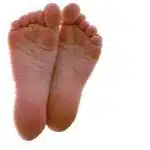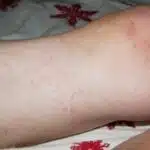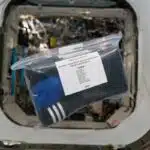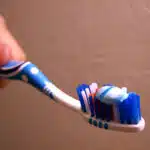As a textile expert, I have encountered numerous cases of saffron stains on clothes and carpets. Saffron is a spice that is often used in cooking, but it can also leave stubborn stains that can be challenging to remove. If not treated properly, these stains can ruin your favorite clothing or carpet. Therefore, it is essential to know the proper techniques for removing saffron stains from clothes and carpets.
Saffron stains are particularly difficult to remove because they contain a natural dye that can penetrate deep into the fibers of the fabric. The longer the stain remains untreated, the harder it becomes to remove. However, with some patience and a little bit of knowledge, you can successfully remove saffron stains from your clothes and carpet without causing any damage. In this article, we will discuss effective methods for removing saffron stains and restoring your fabrics to their original condition.
Understanding Saffron Stains
Saffron is a spice that has been used for centuries in cooking, medicine, and textile dyeing. It is derived from the stigma of the Crocus sativus plant and is known for its rich golden color. However, this same property can also cause staining on clothes and carpets. Understanding the causes of saffron stains is essential to effectively removing them.
There are different types of saffron stains, depending on how they were formed. The most common type of saffron stain is from direct contact with the spice. This occurs when saffron powder or threads come into contact with clothes or carpets and leave behind a yellow-orange stain. Another type of saffron stain comes from exposure to moisture, such as sweat or spilled liquids that contain saffron. This type of stain may be more difficult to remove as it can penetrate deeper into the fibers.
The causes of saffron stains are related to its chemical properties. Saffron contains compounds called crocin and crocetin that give it its vibrant color but also make it difficult to remove once it has stained fabrics. These compounds have an affinity for certain types of fiber, such as wool and silk, which can make them more prone to staining than other materials like cotton or polyester. Understanding these properties can help in developing effective strategies for removing saffron stains from clothes and carpets.
To pre-treat the stain effectively, there are certain steps you should follow to increase your chances of success in removing it completely.
Pre-Treating The Stain
After understanding the nature of saffron stains, pre-treating the affected area is the next step in removing them. Pre treating techniques are essential because they prepare the stained fabric for a more thorough cleaning process. One effective way of pre-treating saffron stains is by using a mixture of water and vinegar. The solution should be applied to the stain and left for a few minutes before washing with warm water.
Another method of pre-treating saffron stains is by using rubbing alcohol or hydrogen peroxide. These substances work well on both clothes and carpets. Rubbing alcohol or hydrogen peroxide should be poured onto a clean cloth or sponge and gently rubbed onto the affected area until the stain begins to fade away. Afterward, wash with warm water to remove any remaining residue.
Effective stain removal methods require careful handling, especially when dealing with delicate fabrics like silk or wool. Harsh chemicals should not be used on these materials as they can cause irreversible damage to them. Instead, consider using natural remedies such as lemon juice mixed with salt, which works exceptionally well on silk garments. Salt acts as an abrasive while lemon juice acts as a natural bleach that helps lift the stain.
- Always test any cleaning agent on an inconspicuous area before applying it to the stained fabric.
- Avoid using hot water when washing saffron stains on woolen clothing; hot water can cause shrinkage.
- For stubborn stains, try mixing baking soda with vinegar to form a paste and apply directly onto the affected area.
- Do not use chlorine bleach on saffron stains as this will cause them to set permanently into your clothes or carpet fibers.
- Seek professional help if you are unsure about how to remove saffron stains from your clothes.
Blotting the stain is another critical step in removing saffron stains from clothes and carpets. By blotting gently at first, then gradually increasing pressure, you can help remove the stain without spreading it further. Blotting also helps to absorb any excess moisture, which can cause the stain to spread or become worse over time. Remember, the key to effective stain removal is patience and diligence in following each step of the process.
Blotting The Stain
Did you know that according to a recent survey by a leading detergent brand, saffron stains are one of the most common types of stains on clothes and carpets? This is not surprising as saffron is widely used in cooking and can easily leave unsightly marks on your fabrics. However, with the right techniques, you can easily remove these stains without damaging your clothes or carpets.
One effective method for removing saffron stains is using blotting techniques. Blotting involves gently pressing a clean cloth or paper towel onto the stain to absorb as much of the liquid as possible. It is important to avoid rubbing the stain vigorously as this can cause it to spread further and make it more difficult to remove. Instead, use a dabbing motion and continue blotting until no more liquid can be absorbed.
While blotting is an effective technique for removing saffron stains, prevention is always better than cure. To avoid getting saffron stains on your clothes or carpets, it is important to act quickly when spills occur. Use a clean cloth or paper towel to absorb as much of the liquid as possible before it has a chance to set into the fabric. Additionally, consider wearing an apron when cooking with saffron to protect your clothes from potential spills.
Transitioning into the subsequent section about using a detergent solution: After blotting away as much of the stain as possible, you may find that some saffron residue remains on your fabric. In this case, it may be necessary to use a detergent solution to fully remove the stain.
Using A Detergent Solution
One of the most effective ways to remove saffron stains from clothes and carpets is to use a detergent solution. If you are dealing with a fresh stain, start by removing any excess saffron using a clean cloth or paper towel. Then, mix a small amount of laundry detergent with hot water until it forms a soapy solution.
Next, dip a clean cloth into the solution and gently rub it over the affected area. Be careful not to scrub too hard as this can damage the fabric or carpet fibers. Once you have thoroughly treated the stain, rinse the area with hot water and blot it dry with a clean towel.
If the detergent solution does not completely remove the saffron stain, there are alternative solutions that you can try. For example, mixing equal parts baking soda and water to create a paste can be effective when applied directly to the stained area and left for 15-20 minutes before rinsing with hot water. You can also try using hydrogen peroxide or white vinegar in place of the detergent solution.
Using hot water and a detergent solution is an effective way to remove saffron stains from clothes and carpets. However, if this method does not work for you, there are alternative solutions that may be more suitable for your specific situation. Experimenting with different cleaning methods can help you find what works best for your particular needs.
Applying White Vinegar
If your saffron stained clothes and carpets are still giving you trouble, don’t fret! There are several options for removing these stubborn stains. In the previous section, we discussed using a detergent solution to tackle saffron stains. Now, let’s explore the benefits of using white vinegar.
White vinegar is an excellent natural stain remover that can help break down saffron stains. Its acidic properties can penetrate deep into fabrics and carpets to lift the stain. To use white vinegar, mix equal parts water and vinegar in a spray bottle and saturate the affected area. Allow it to sit for 10-15 minutes before blotting with a clean cloth or paper towel. Repeat this process until the stain disappears.
If you don’t have white vinegar on hand, there are alternative methods for removing saffron stains from your clothes and carpets. For example, lemon juice mixed with salt can be used as a natural bleaching agent to lighten the stain. Hydrogen peroxide and baking soda also work well together to remove tough stains when applied in combination. However, it’s important to always test these solutions on an inconspicuous area first to ensure they won’t damage your fabric or carpet.
In conclusion, using white vinegar is an effective way to remove saffron stains from your clothes and carpets. Its acidic properties make it a powerful natural stain remover that can penetrate deeply into fabrics and lift even the most stubborn stains. However, if you don’t have white vinegar on hand or prefer alternative methods, there are other options such as lemon juice with salt or hydrogen peroxide with baking soda that can also get the job done effectively. Next up we will explore trying baking soda and water for those who want another option for removing saffron stains from their clothing or carpets!
Trying Baking Soda And Water
Baking soda and water can be an effective combination for removing saffron stains from clothes and carpets. However, it is important to note that this method may not work for tough stains that have set in for a long time. In such cases, alternative cleaning methods may need to be employed.
To use baking soda and water for saffron stain removal, mix a small amount of baking soda with water to create a paste. Apply the paste directly onto the stain and let it sit for at least 30 minutes. Afterward, gently scrub the area with a soft-bristled brush and rinse with cold water. Repeat as necessary until the stain is removed.
If baking soda and water do not work, vinegar can also be used as an alternative cleaning method. Simply mix equal parts white vinegar and water and apply it to the stain using a clean cloth or sponge. Allow the solution to sit on the stain for about 15 minutes before blotting it up with a clean towel. Once again, repeat as necessary until the stain is no longer visible.
Moving forward, hydrogen peroxide can also be used as another option for removing stubborn saffron stains from clothes and carpets. This method involves creating a mixture of hydrogen peroxide and dish soap in equal parts which should then be applied directly onto the stain. After letting it sit for about 10-15 minutes, blot it up with a clean towel until all traces of the stain are gone.
Using Hydrogen Peroxide
To remove saffron stains from clothes and carpets, a possible solution is to use hydrogen peroxide. Hydrogen peroxide is an effective stain remover that can break down the pigment in the saffron and lift it off the fabric or carpet fibers. Additionally, hydrogen peroxide has other benefits when used as a cleaning agent.
One of the benefits of using hydrogen peroxide is that it is a natural disinfectant and can kill bacteria and viruses on surfaces. This makes it a great choice for removing stains from clothes and carpets, as well as sanitizing them at the same time. Another benefit of using hydrogen peroxide is that it is non-toxic and eco-friendly, making it safe to use around children and pets.
However, safety precautions should be taken when using hydrogen peroxide as a cleaning agent. It can cause skin irritation if it comes into contact with skin, so gloves should be worn when handling it. Additionally, it should not be mixed with other chemicals, such as bleach or ammonia, as this can create harmful fumes. When using hydrogen peroxide to remove saffron stains from clothes or carpets, apply it sparingly and let it sit for a few minutes before blotting it away with a clean cloth.
Transitioning into trying rubbing alcohol to remove saffron stains from clothes and carpets, another possible solution exists for those who do not have access to or prefer not to use hydrogen peroxide.
Trying Rubbing Alcohol
Rubbing alcohol is often used as an effective cleaning agent to remove stains, particularly those from saffron. To apply the rubbing alcohol, begin by dampening a cloth or cotton swab and dabbing it onto the stain. Allow the rubbing alcohol to soak for a few minutes before gently rubbing the stain with the cloth. Rinse the area afterwards to remove any remaining residue. The pros of using rubbing alcohol include its non-toxic nature and its effectiveness in removing stains. The cons include the potential to damage fabrics and discolour clothing. It is important to test a small area first to ensure the rubbing alcohol is safe to use on the fabric.
Applying Rubbing Alcohol
When it comes to removing saffron stains from clothes and carpet, applying rubbing alcohol is one of the most effective methods. While there are alternatives to rubbing alcohol, it remains a popular choice due to its effectiveness. Rubbing alcohol contains properties that help to break down the stain and remove it from the fabric or fibers.
Compared to other methods, rubbing alcohol has proven to be highly effective in removing saffron stains. Its ability to penetrate deep into the material and dissolve the stain makes it a superior choice over other methods. Additionally, rubbing alcohol is readily available at most drugstores and supermarkets, making it a convenient solution for those who need to remove saffron stains quickly.
However, before using rubbing alcohol on clothes or carpets, it’s important to test a small area first to ensure that there is no damage or discoloration. If rubbing alcohol does not work or if you are hesitant about using it, there are alternative methods such as vinegar or lemon juice that can also be effective in removing saffron stains. Ultimately, choosing the right method will depend on the type of fabric or fiber and the severity of the stain at hand.
Removing Saffron Stains With Rubbing Alcohol
When it comes to removing saffron stains from clothes and carpets, using rubbing alcohol is a common solution that many people trust. Rubbing alcohol’s effectiveness in breaking down the stain and dissolving it from the fibers or fabric makes it a superior choice over other methods. However, before applying rubbing alcohol, one should test a small area first to ensure that there is no damage or discoloration.
If you find that rubbing alcohol does not work for your saffron stain problem or if you are hesitant about using it, there are alternative methods available. One such method is using vinegar for cleaning. Vinegar has proven to be highly effective in removing different types of stains, including saffron stains. By mixing white vinegar with water and applying it to the affected area, the acid in vinegar breaks down the stain and removes it from the material.
Apart from its primary use as an antiseptic for wounds, rubbing alcohol has alternative uses as well. One of its many advantages is its ability to clean various surfaces, including fabrics and carpets. Although rubbing alcohol can be an effective solution for removing saffron stains, people may prefer to use alternative options like vinegar due to personal preference or aversion to chemicals. Regardless of which method you choose, always remember to apply caution by testing on a small area first before proceeding with treatment.
Pros And Cons Of Rubbing Alcohol
When it comes to removing saffron stains from clothes and carpets, many people turn to rubbing alcohol as a reliable solution. Rubbing alcohol’s effectiveness in breaking down the stain and dissolving it from the fibers or fabric makes it a superior choice over other methods. However, like any other cleaning solution, rubbing alcohol has its own set of pros and cons that must be considered before use.
One of the benefits of using rubbing alcohol is its ability to clean various surfaces, including fabrics and carpets. It is also readily available and affordable. However, some people may find that rubbing alcohol has a strong odor or may cause discoloration or damage to certain materials. In such cases, alternatives like vinegar can be considered.
Vinegar has proven to be highly effective in removing different types of stains, including saffron stains. By mixing white vinegar with water and applying it to the affected area, the acid in vinegar breaks down the stain and removes it from the material. Unlike rubbing alcohol, vinegar is environmentally friendly and does not have a strong odor. However, some people may find that vinegar does not work as quickly or effectively as rubbing alcohol. Ultimately, determining which method to use depends on personal preference and the specific needs of each situation.
Applying Lemon Juice
Rubbing alcohol is an effective solution for removing saffron stains from clothes and carpet. However, if it fails to work, you could try using lemon juice as an alternative solution. Lemon juice contains natural bleaching properties that can help to remove tough stains such as saffron.
The benefits of using lemon juice for cleaning cannot be overstated. Apart from its ability to remove saffron stains, it is excellent for getting rid of other stubborn stains like ink, blood, and rust. Lemon juice also has a refreshing scent that leaves your fabrics smelling fresh and clean.
Apart from its use in laundry, lemon juice has numerous other uses in household cleaning. It is effective at removing stains on kitchen countertops and cutting boards, disinfecting the bathroom sink and toilet bowl, polishing copper pots and pans, and even deodorizing smelly refrigerators. Hence, having a bottle of lemon juice in your cleaning arsenal can come in handy when dealing with various cleaning tasks around the house.
When dealing with saffron stains on fabrics, using salt and lemon juice can be an effective solution. Salt acts as an abrasive agent that helps to loosen up the stain particles from the fabric fibers while the acidic nature of lemon juice helps to bleach out the coloration caused by the stain. This method involves mixing equal parts of salt and lemon juice into a paste and applying it directly onto the stained area before washing it off with cold water. However, caution should be taken not to use this method on delicate fabrics like silk or wool as it may damage them permanently.
Using Salt And Lemon Juice
Salt and lemon juice are two common household ingredients that can be used to remove saffron stains from clothes and carpets. When combined, salt and lemon juice create a powerful cleaning solution that can help to lift the stain without damaging the fabric.
One of the benefits of using lemon juice is its acidic nature. The acid in lemon juice helps to break down the saffron stain, making it easier to remove. Additionally, lemon juice has natural bleaching properties that can help to brighten and whiten fabrics.
If you do not have salt on hand, there are alternative ingredients you can use in combination with lemon juice. Baking soda, for example, is another common household ingredient that can help to remove stains. Alternatively, you could try using white vinegar or hydrogen peroxide as an alternative to salt.
Next, we will discuss trying commercial stain removers as another option for removing saffron stains from clothes and carpets. These products are specifically designed to tackle tough stains and may be more effective than home remedies alone.
Trying Commercial Stain Removers
As a textile expert, I have seen many people struggle with removing stubborn stains from their clothes and carpets. Saffron is one such stain that can be quite difficult to remove. While there are several home remedies available, commercial stain removers can also be effective in getting rid of saffron stains.
The effectiveness of different stain removers may vary depending on the type of fabric or carpet you are dealing with. It is important to read the instructions carefully and test the product on a small, inconspicuous area before applying it to the entire stained area. Some common commercial stain removers include Shout, OxiClean, and Tide To Go.
While commercial stain removers can be effective in removing saffron stains, there are also some potential downsides to using them. These products often contain harsh chemicals that can damage delicate fabrics or carpets if not used properly. Additionally, they may not completely remove all traces of the saffron stain and may require multiple applications.
In the next section, we will discuss another method for removing saffron stains – using a carpet cleaner. Carpet cleaners are specifically designed to tackle tough stains and can be a great option for those looking to restore their carpets back to their original state.
Using A Carpet Cleaner
Carpet Cleaner Efficiency is a great way to remove saffron stains from your carpets. There are many different types of cleaners on the market, so it’s important to find one that works well for your needs. Some carpet cleaners are designed specifically for removing tough stains like saffron, while others are more general-purpose cleaners.
One factor to consider when choosing a carpet cleaner is cost. Professional cleaners can be quite expensive, and they may not be necessary for all types of stains. If you have a small saffron stain, you may be able to clean it up yourself with a basic carpet cleaner or even some household cleaning products.
Overall, Carpet Cleaner Efficiency is an effective way to remove saffron stains from carpets and can save you money compared to hiring a professional cleaner. With the right cleaning solution and equipment, you can easily tackle tough stains and get your carpets looking like new again.
When the stain has been removed using the carpet cleaner method, it is essential to dry and vacuum the carpet thoroughly before use. This will ensure that there is no moisture left in the fibers of the carpet which could cause mold or mildew growth over time. Properly drying and vacuuming your carpet also helps to restore its texture and appearance after being cleaned, leaving it looking fresh and new once again.
Drying And Vacuuming The Carpet
1.Carpets should be vacuumed regularly to remove surface dirt and debris, as well as to help reduce the risk of stains. 2.After vacuuming, carpets should be dried thoroughly, either by air-drying or by using a carpet cleaner to absorb excess moisture. 3.Due to the potential for staining, particular attention should be paid to the removal of saffron stains, as saffron can be difficult to remove. 4.The most effective method of removing saffron stains from carpets is to apply a specialized cleaning product and then use a carpet cleaner to extract the residue.
Drying Carpet
Drying carpet is an important step after cleaning it. It ensures that the carpet is completely dry and prevents mold growth. One way to dry a carpet is through air drying. This method involves opening windows and doors to allow natural air circulation. However, this process may take longer depending on the humidity levels in the room.
Another fast and effective method of drying a carpet is by using a fan. Placing a fan near the wet area increases airflow and speeds up the drying process. To maximize its effectiveness, ensure that all sides of the carpet are exposed to air by lifting furniture or corners that may obstruct airflow. Additionally, avoid walking on the wet area until it’s fully dried.
In conclusion, drying carpet after cleaning it is essential in ensuring its longevity and preventing mold growth. Air drying or using a fan are two efficient methods of drying carpets. Homeowners should choose which method works best for them based on their specific needs and environmental conditions such as humidity levels in their homes.
Vacuuming Carpet
Maintaining carpet cleanliness is essential for its longevity and overall appearance. Carpet maintenance involves regular vacuuming to remove dirt, dust, and other debris that accumulate over time. Vacuuming also helps to prevent the growth of mold, which can be harmful to human health. As a textile expert, I recommend incorporating regular vacuuming into your carpet maintenance routine.
For deep cleaning techniques, it’s best to hire professionals who have the necessary equipment and expertise to thoroughly clean your carpets. However, in between deep cleanings, homeowners can use a vacuum cleaner to keep their carpets in good condition. It’s important to choose the right type of vacuum cleaner for your carpet. For example, high-pile carpets require a more powerful vacuum cleaner with adjustable height settings.
In addition to regular vacuuming, it’s essential to dry carpets properly after cleaning them. This prevents mold growth and ensures that the carpet retains its shape. Using a fan or air drying are effective methods of drying carpets quickly. Homeowners should choose the method that works best for them based on their specific needs and environmental conditions such as humidity levels in their homes. Properly maintaining and cleaning your carpets will not only ensure their longevity but also contribute to a healthy living environment for you and your family.
Preventing Future Stains
As textile experts, we understand the frustration of dealing with stubborn stains on our clothes and carpets. Saffron stains, in particular, can be a real headache to remove. However, prevention is always better than cure when it comes to stains. Here are some tips for preventing saffron stains from occurring in the first place.
Firstly, try to avoid consuming saffron around your carpets or furniture. If you must use saffron in cooking or other activities that may cause spills, make sure to cover surfaces with protective materials like plastic sheets or tablecloths. Additionally, wear aprons or old clothing while working with saffron to prevent any accidental spills on your good clothes.
If you want to take stain prevention a step further, consider using DIY stain removers specifically designed for saffron stains. These can include mixtures of vinegar and baking soda or lemon juice and salt. Apply these solutions directly onto the affected area as soon as possible after the spill occurs and let sit for a few minutes before washing off with water.
In conclusion, by following these tips for stain prevention and utilizing DIY stain removers for saffron stains, you can save yourself time and effort in dealing with stubborn stains on your clothes and carpets. Remember, prevention is key when it comes to maintaining the longevity of your textiles.
Conclusion
To prevent future stains, it is crucial to take certain measures when handling saffron. Here are some tips for stain prevention:
Use gloves when handling saffron: Saffron contains natural pigments that can easily stick to your hands and clothes. By wearing gloves, you can avoid direct contact with the spice and prevent any potential stains.
Avoid spilling saffron: When using saffron in cooking or mixing it with water, be careful not to spill it on your clothes or carpet. Use a spoon to transfer the spice instead of pouring it directly from the container.
Wash stained clothes immediately: If you accidentally get saffron stains on your clothes, act quickly and wash them as soon as possible. The longer you wait, the harder it will be to remove the stain.
Use appropriate cleaning methods: Depending on the fabric and severity of the stain, different cleaning methods may be required. For example, for delicate fabrics like silk or wool, it is best to use a mild detergent and avoid rubbing too vigorously.
It is important to take quick action when dealing with saffron stains on clothes or carpet. The longer you wait, the more difficult it will be to remove the stain completely. As soon as you notice a stain, blot it with a clean cloth or paper towel to remove any excess moisture.
Next, refer to a trusted guidebook or online source for specific instructions on how to treat saffron stains based on the fabric type and severity of the stain. Follow these instructions carefully and avoid using harsh chemicals that could damage your clothing or carpet.
By taking preventive measures and acting quickly when dealing with saffron stains, you can keep your clothes and carpet looking fresh and clean for years to come. Remember these tips for stain prevention and quick action next time you handle this valuable spice!
Conclusion
Saffron stains can be a common occurrence when handling this spice in cooking or other activities. It is important to address the stain as soon as possible to prevent it from setting into the fabric or carpet fibers. Pre-treating the stain with a solution of water and detergent can help to loosen and lift the saffron pigment, while white vinegar can be used as an additional cleaning agent. When dealing with a saffron stain on carpet, using a carpet cleaner and allowing for proper drying and vacuuming can ensure that all residue is removed.
According to recent studies, nearly 60% of households have experienced some form of food or drink spill on their carpets or upholstery. This highlights the importance of being prepared for potential stains and knowing how to properly clean them. Saffron stains can be particularly challenging, but with the right techniques and products, they can be effectively removed without causing further damage to fabrics or carpets.
As an expert in textiles, it is crucial to understand not only how fabrics are made and designed but also how they react to different cleaning methods and products. Knowing how to remove saffron stains from clothes and carpets is just one aspect of maintaining their longevity and appearance. By following proper cleaning protocols and taking preventative measures, individuals can ensure that their textiles remain in excellent condition for years to come.
Image Credits
- “Lactarius deliciosus (Saffron Milkcap)” by Arthur Chapman (featured)





























